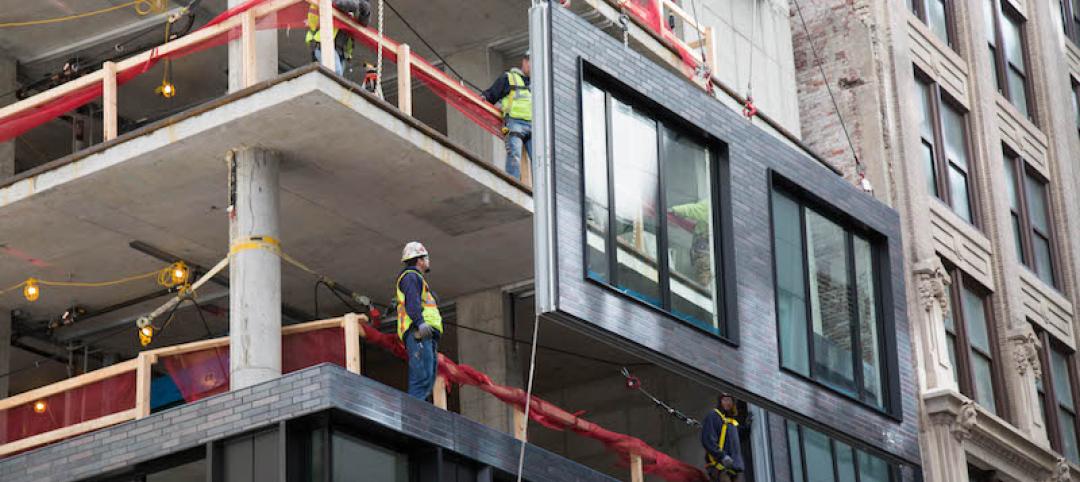The impact of the Covid pandemic on the construction industry appears to be fueling demand for modular construction methods, especially in the western U.S. and Canada.
Several new suppliers of modular units have come online since 2019, and existing companies have been scaling up factory capacity. Modular offers benefits that can counteract challenges that were worsened by the pandemic.
For instance, bringing the task of ordering finishes, fixtures, and construction materials under one roof streamlines the supply chain, which grew tighter and became less predictable after the pandemic struck. Modular vendors that supply finished bathrooms and kitchens remove the burden of procuring many individual products from contractors and subcontractors.
Likewise, by completing the work of multiple subcontractors up front, they relieve the pressure on contractors to hire and schedule some of the work of various trades on site, thereby easing demand for labor.
Modular construction can also speed up construction schedules. There are some drawbacks, though, including the high cost of shipping.
Developers today use modular construction for many kinds of buildings, including supportive housing, hotels, resorts, apartments, detached homes, senior living facilities, office buildings, and factories.
Related Stories
Contractors | Oct 2, 2018
Katerra adds a Denver-area GC to its growing stable
Bristlecone Construction brings self-performing expertise in concrete and framing.
Architects | Sep 14, 2018
We’ve entered the golden age of brain science. What does it mean for AEC firms?
New research from the SMPS Foundation explores the known principles and most recent research surrounding the human brain and behavioral science. The goal: to discover connections between the science and the AEC business.
Contractors | Sep 5, 2018
Lean, tech, talent training highlight contractor innovations
From 5D estimating tools to interactive punch lists, the nation’s largest construction and construction management firms continue to push technology to gain an edge.
Modular Building | Aug 6, 2018
More contractors are turning to offsite production for speed and quality
Skender launches an advanced manufacturing division. Katerra ups its bet on modular. Prefabrication comes to the rescue on multiple projects.
Architects | Aug 1, 2018
Client experience as competitive advantage for AEC firms
Clients are looking for solutions to their business problems from collaborative advisors. They’ve come to expect a higher level of service and detail than what was provided in the past.
Codes and Standards | Jul 31, 2018
Workers allegedly held in captivity by construction subcontractor in San Jose pay theft case
Contractor pays $250,000 in back wages in Dept. of Labor enforcement action.
Building Team | Jul 30, 2018
Construction tech is the new investment darling for VC funds
In the first half of 2018, venture capital firms invested $1.05 billion in global construction tech startups, setting a record high.
Modular Building | Jul 23, 2018
Offsite construction: Why it’s important for the survival of your firm
The industry is approaching its “heart attack moment,” with so many large projects that are chronically late, over budget, and unprofitable, writes FMI Capital Advisors’ Michael Swistun.
Building Owners | Jul 17, 2018
Are we facing a new era in Foreign Direct Investment?
The construction industry is already feeling the effects of the recent tariffs, not only with higher steel and aluminum prices, but with higher prices on Canadian lumber.
Office Buildings | Jul 17, 2018
Transwestern report: Office buildings near transit earn 65% higher lease rates
Analysis of 15 major metros shows the average rent in central business districts was $43.48/sf for transit-accessible buildings versus $26.01/sf for car-dependent buildings.

















